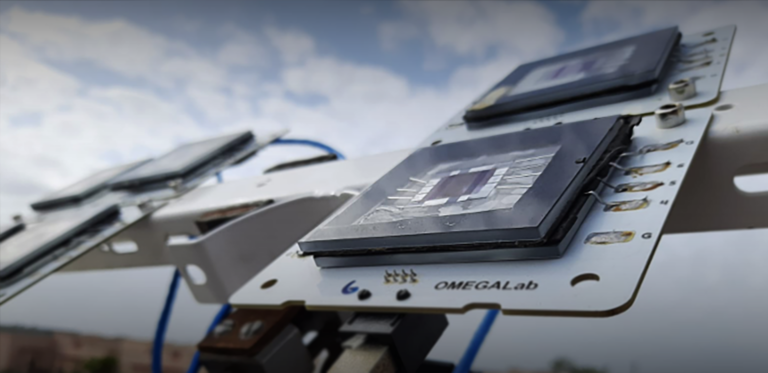Applied Physics | Material Science and Engineering
2D materials could boost magnetic data storage
An unconventional 2D ferromagnet might enable smaller and more reliable devices for data storage.

Theoretical calculations by KAUST researchers have identified a material that could improve magnetic data-storage devices. This material consists of just three atomic layers and could lead to smaller and more reliable magnetic tunnel junctions (MTJs)[1].
MTJs contain two ferromagnetic layers separated by a thin insulating barrier, which enables them to sense magnetization. They are used, for example, to read data from hard disk drives that store the zeroes and ones of binary information in the magnetization of tiny regions on its disk.
MTJs also form the basis of a data storage technology called magnetic random-access memory, which is used in applications where data must be read or written rapidly, or when high endurance is required. In these MTJs, one of the ferromagnetic layers has a fixed magnetization, while the magnetization of the other can point in the same or the opposite direction. These two states encode the binary information. Data is written by switching the magnetization, and it can be read by determining the electrical resistance between the layers.
Conventional MTJs suffer from tiny defects that limit their performance, so researchers are trying to develop more advanced devices based on 2D materials, which may contain only a few atomic layers.
The KAUST team has explored an MTJ design that uses two pieces of the 2D material lanthanum iodide as its ferromagnetic layers. The space between these layers — known as a van der Waals gap — acts as an insulating barrier. The lanthanum iodide layers are sandwiched between electrodes made from graphene, a honeycomb lattice of carbon atoms. The researchers’ calculations show that switching this MTJ between its two magnetic states — using an external magnetic field — alters the flow of charge between the electrodes.
This effect relies on the fact that electrons have their own intrinsic magnetism. When the magnetizations of the lanthanum iodide layers point in the same direction, electrons can pass more easily across the insulating barrier than when the magnetizations of the layers point in opposite directions.
The difference in the electrical currents of the device’s two states determines the tunneling magnetoresistance ratio. A high ratio implies more reliable switching between these states. The researchers calculate that their device has a very high tunneling magnetoresistance ratio of 653%, more than three times that of commercial iron-based MTJs.
“The key advantage over conventional magnetic tunnel junctions is the use of a 2D material, which enables an ultra-thin design with atomically smooth interfaces,” says Udo Schwingenschlögl, who led the team. Exploiting the van der Waals gap between the two ferromagnetic layers also simplifies the device design, he adds, because no extra insulating layer is required.
“A high magnetoresistance ratio can also improve the reliability of the data storage in magnetic random-access memories,” says Shubham Tyagi, a Ph.D. student in KAUST’s Physical Science and Engineering Division, who was part of the team. The researchers now plan further calculations for different combinations of 2D materials and hope to discover arrangements that enhance the performance of MTJs even further.
Reference
- Tyagi, S., Ray, A., Singh, N. & Schwingenschlögl, U. Magnetic tunnel junction based on bilayer LaI2 as perfect spin filter device. npj 2D Materials and Applications 8, 57 (2024).| article
You might also like

Material Science and Engineering
Electron movie guides design of layered perovskite materials

Material Science and Engineering
Remote region sensor for essential vitamin deficiency

Material Science and Engineering
Low-power hydrogen sensor detects leaks in an instant

Material Science and Engineering
Illuminating pathways to long-lived organic solar cells

Chemistry
Beating the dark current for safer X-ray imaging

Chemical Engineering
Net benefits for advanced materials design

Material Science and Engineering
Atom-thin insulator grown into perfect films

Material Science and Engineering




